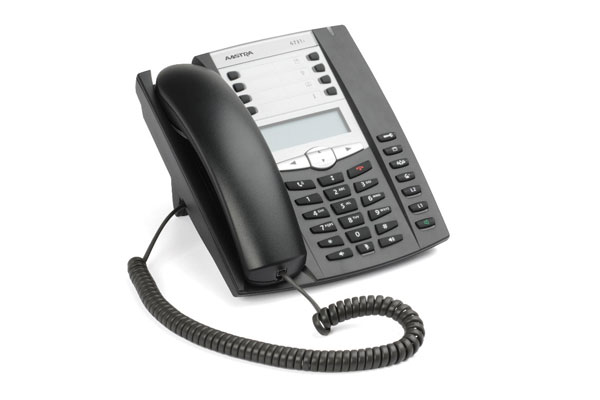Aastra 6731i VoIP handset review
Moving to VoIP based telephony doesn’t require having to use weird and wonderful handsets – we look at the reassuringly safe looking Aastra 673i.

The Aastra is a reasonable all round device but we found both the manual and the web interface to be less than clear. On balance we prefer the similarly priced Snom 300.

To get the phone working, we had to add the Phone number and Registrar server to Global SIP and set the SIP server IP and port as the Proxy under Line 1 it didn't work with these set only in Global SIP. Any changes to the SIP account details require a reboot for them to take effect, which takes a couple of minutes.
To update the phone's firmware, you'll have to download the latest version from Aastra's site and copy it over to a local TFTP server. With this done, the phone's web interface enables you to upgrade by entering the address of your server and the file name of the new firmware. The most obvious changes made by the update were to remove the largely useless "Services" and its subsidiary "WebApps" menus from the phone's interface and to change the painfully piercing dial tone to the correct version for our country settings. More significantly, the updated firmware doesn't require the NAT IP and port to be set, which we had to do in order to get the phone working with its original firmware. The update also resolved NAT issues with incoming calls. We strongly recommend carrying out a firmware update before using the phone as part of a live system.
Most of the other settings worked with our SIP server when left at their defaults but the interface provides plenty of options that enables you to configure the phone for use in more unusual configurations. These include support for TLS encryption (used to authenticate secure connections between the phone and the server) and 802.1x authentication. The Troubleshooting menu enables you to save your configuration settings, set various debug levels and export logs, but it can't display full logs on screen.
The 6731i worked well once we'd worked around the quirks of its Global and Line settings, but its interface is poorly designed compared to similarly priced rivals. The absence of the administrator's guide from accompanying CD is a serious omission, particularly as it's the only manual that includes the default user name and password. The absence of a bundled power supply is also a disadvantage in small office systems that don't use PoE to provide power to the phones and we were also unhappy with the phone's poorly designed receiver cradle.
Verdict
The Aastra is a reasonable all round device but we found both the manual and the web interface to be less than clear. On balance we prefer the similarly priced Snom 300.
Dual 10/100 Mbps switched Ethernet ports (LAN and PC pass-though), Speakerphone Standards: DHCP, SNTP time synchronization, QoS, NAT Configuration via TFTP/FTP/HTTP/HTTPS, RCTP, RTP streaming, STUN/TURN, IEEE 802.1x (RADIUS), LLDP-MED, XML, TLS, SRT. PART CODE A6731-0131-10-01
Sign up today and you will receive a free copy of our Future Focus 2025 report - the leading guidance on AI, cybersecurity and other IT challenges as per 700+ senior executives
K.G. is a journalist, technical writer, developer and software preservationist. Alongside the accumulated experience of over 20 years spent working with Linux and other free/libre/open source software, their areas of special interest include IT security, anti-malware and antivirus, VPNs, identity and password management, SaaS infrastructure and its alternatives.
You can get in touch with K.G. via email at reviews@kgorphanides.com.
-
 OpenAI's 'Skills in Codex' service aims to supercharge agent efficiency for developers
OpenAI's 'Skills in Codex' service aims to supercharge agent efficiency for developersNews The Skills in Codex service will provide users with a package of handy instructions and scripts to tweak and fine-tune agents for specific tasks.
By Ross Kelly Published
-
 Cloud infrastructure spending hit $102.6 billion in Q3 2025 – and AWS marked its strongest performance in three years
Cloud infrastructure spending hit $102.6 billion in Q3 2025 – and AWS marked its strongest performance in three yearsNews Hyperscalers are increasingly offering platform-level capabilities that support multi-model deployment and the reliable operation of AI agents
By Emma Woollacott Published
-
 Google Cloud teases revamped partner program ahead of 2026
Google Cloud teases revamped partner program ahead of 2026News The cloud giant’s new-look partner ecosystem shifts focus from activity tracking to measurable customer outcomes
By Daniel Todd Published
